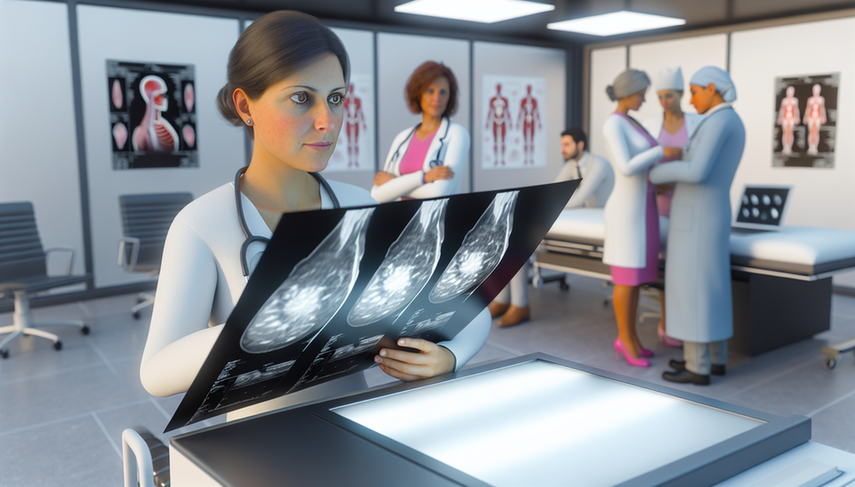Breast Cancer Diagnosis: Mammography, Trucut Biopsy, and TNM Staging Insights

Dear colleagues, the breast cancer diagnosis is a complex process that requires a combination of advanced techniques and a multidisciplinary approach. Mammography remains the cornerstone of early detection, while trucut biopsy provides the necessary histological confirmation. TNM staging is crucial for determining the extent of the disease and planning appropriate treatment.
Diving Deeper into Diagnosis
Mammography is an essential tool in the detection of breast cancer, especially in women over 40 years of age. Recent studies have shown that annual screening significantly reduces the risk of advanced-stage cancer and improves overall survival [1]. However, in resource-limited regions, such as Syria, the lack of access to screening mammograms has resulted in late diagnoses and more advanced stages of the disease [2].
The trucut biopsy is the next step in diagnosis, providing a tissue sample for histological analysis. In some cases, surgical biopsy has been observed to be used more frequently than image-guided biopsy, which can delay diagnosis and treatment [3].
TNM staging is fundamental for assessing the extent of cancer. Advanced techniques such as contrast-enhanced mammography and magnetic resonance imaging are utilized for precise staging, especially in cases of multifocal or multicentric cancer [4]. These techniques allow for better surgical planning and may influence the decision to perform neoadjuvant chemotherapy [5].
Conclusions
The diagnosis of breast cancer is a process that requires precision and a comprehensive approach. The combination of mammography, trucut biopsy, and TNM staging enables physicians to offer personalized and effective treatment. It is crucial that we continue to improve access to these technologies and promote education on the importance of regular screening to enhance outcomes for our patients.
References
- [1] Breast Cancer Screening Interval: Effect on Rate of Late-Stage Disease at Diagnosis and Overall Survival
- [2] Breast cancer quality of care in Syria: screening, diagnosis, and staging
- [3] Breast Cancer Diagnosis and Treatment After High-Deductible Insurance Enrollment
- [4] Locoregional staging of breast cancer: contrast-enhanced mammography versus breast magnetic resonance imaging
- [5] Impact of preoperative staging with contrast-enhanced mammography for localized breast cancer management
Created 4/1/2025
